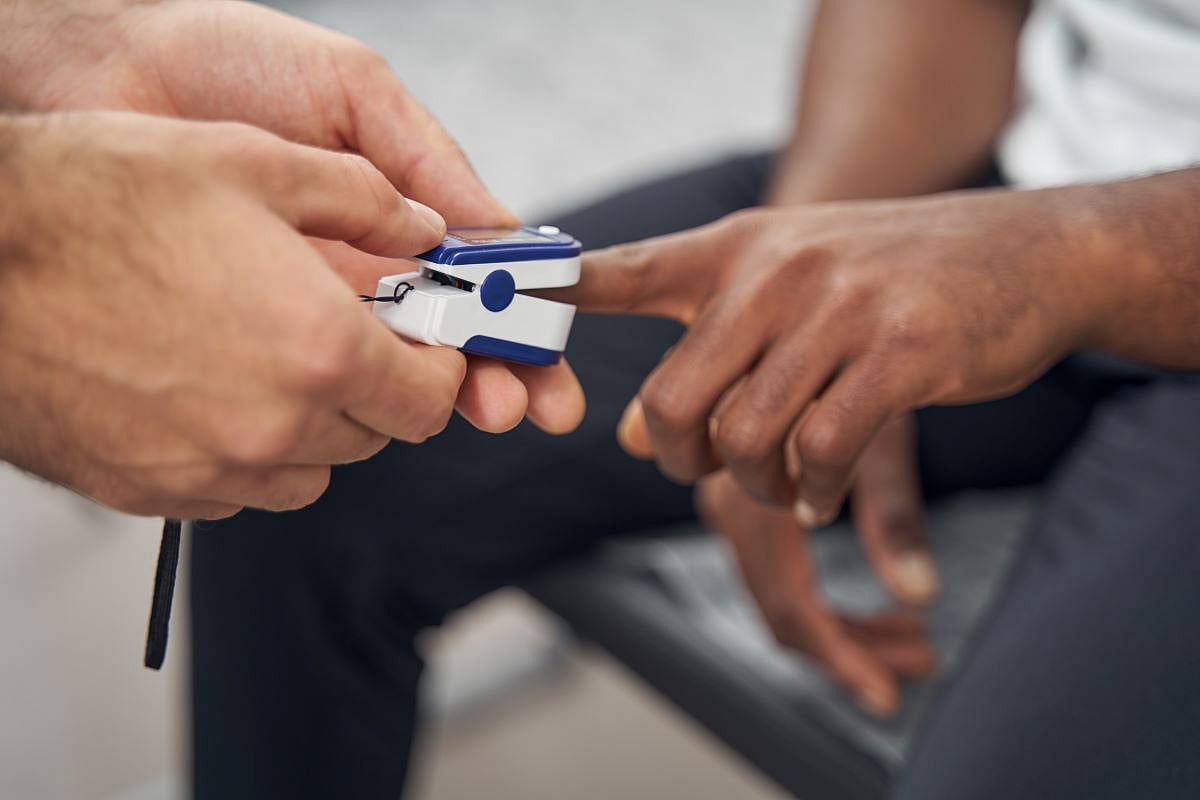Get Healthy!
Staying informed is also a great way to stay healthy. Keep up-to-date with all the latest health news here.
16 Jan
Early Exposure to Air Pollution May Raise Childhood Blood Pressure
A new study finds children exposed to fine particulate matter during pregnancy and early childhood are more likely to have higher blood pressure from ages 5 to 12.
15 Jan
Is No Social Media as Risky as Too Much for Teens?
A new study finds both heavy use and zero use of social media can negatively impact teen well-being.
14 Jan
Study: Chronic Illness Raises Risk of Botox Side Effects
UK researchers report higher complication rates from cosmetic Botox injections among patients with chronic conditions like type 1 diabetes and thyroid disease.
What You Can Do To Prevent Chronic Kidney Disease
More than 14% of U.S. adults have some level of chronic kidney disease — and most have no idea.
"People with chronic kidney disease generally have no symptoms until they’re very near kidney failure," said kidney-health researcher Dr. Michael Shlipak of the University of California, San Francisco.
Chronic kidney dise...
- Carole Tanzer Miller HealthDay Reporter
- |
- January 17, 2026
- |
- Full Page
Popular Super Greens Supplement Recalled After Salmonella Illnesses Reported
A powdered super greens supplement sold across the U.S. has been recalled after federal health officials linked it to a Salmonella outbreak that has sickened people in at least 21 states.
At least 45 people have become ill after consuming Live it Up-brand Super Greens powder, according to U.S. Food and Drug Administration (FDA) an...
- I. Edwards HealthDay Reporter
- |
- January 16, 2026
- |
- Full Page
Mistrust Fuels Drop in Deceased Organ Donations, Kidney Transplants
More than 100,000 people in the U.S. are waiting for an organ transplant, and most need a kidney. Thousands die each year before a matching organ becomes available.
New federal data reviewed by the Kidney Transplant Collaborative show that 116 fewer kidney transplants were performed last year than in 2024.
While that difference...
- I. Edwards HealthDay Reporter
- |
- January 16, 2026
- |
- Full Page
Trump Administration Restores Nearly $2 Billion in Mental Health Grants
Federal funding for mental health and addiction treatment programs will continue after the Trump administration abruptly reversed a plan to end nearly $2 billion in grants across the country.
Late Tuesday, thousands of grants overseen by Substance Abuse and Mental Health Services Administration (SAMHSA) were suddenly terminated.
<...- I. Edwards HealthDay Reporter
- |
- January 16, 2026
- |
- Full Page
Whole Milk Returns to School Lunches
Whole milk may soon be back on school lunch trays across the U.S.
President Donald Trump signed a new law Wednesday that allows schools to serve whole and 2% milk again, reversing rules that limited higher-fat milk options for more than a decade.
The law, called the Whole Milk for Healthy Kids Act, lets schools in the National School...
- I. Edwards HealthDay Reporter
- |
- January 16, 2026
- |
- Full Page
Nerve Stimulation Halts Depression In More Than 20% Of Patients, Clinical Trial Reports
Treatment-resistant depression might be eased using an implant that sends electrical pulses to one of the body’s major nerve clusters, a new study says.
The implant, placed under the skin in the chest, sends carefully calibrated electrical pulses to the left vagus nerve — a major conduit between the brain and internal organs.
- Dennis Thompson HealthDay Reporter
- |
- January 16, 2026
- |
- Full Page
'If In Doubt, Sit Them Out,' Insists New Concussion Guidance For Parents
The bottom line for managing youth sports concussions is “if in doubt, sit them out,” new guidelines say.
Earlier recognition of a concussion — and removal from play — will help a young athlete more quickly recover and return to competition, according to an easy-to-follow guide published recently in the Archives...
- Dennis Thompson HealthDay Reporter
- |
- January 16, 2026
- |
- Full Page
Air Pollution Increases Risk of Childhood High Blood Pressure
Children might wind up with high blood pressure due to air pollution exposure that occurred in the womb or the cradle, a new study says.
Exposure to smog before and after birth increases a child’s odds of having higher blood pressure between ages 5 and 12, researchers report in the March 2026 issue of the journal Environmental Re...
- Dennis Thompson HealthDay Reporter
- |
- January 16, 2026
- |
- Full Page
Medical Students Not Being Adequately Trained To Confront Death, Review Finds
Doctors encounter death more than people in nearly all other lines of work.
That’s the price they pay for a career spent saving lives and helping people.
But modern medical education leaves doctors little-prepared for this inevitable challenge, a new evidence review says.
There’s minimal evidence-based education ava...
- Dennis Thompson HealthDay Reporter
- |
- January 16, 2026
- |
- Full Page
Fingertip Blood Oxygen Monitors Are Less Accurate For People Of Color, Study Finds
Most everyone’s seen one in a doctor’s office or hospital room — the finger clip device that reads a person’s pulse and blood oxygen levels.
But new research shows these ubiquitous devices appear to give misleading readings for people with darker skin tones, potentially affecting their care.
Pulse oximeters gi...
- Dennis Thompson HealthDay Reporter
- |
- January 16, 2026
- |
- Full Page
Drunk For No Reason? Could Be A Rare Gut Disorder, Researchers Say
Ever felt drunk, hammered, wasted, absolutely smashed — but you haven’t touched a drop of alcohol?
You might have suffered from a rare gut condition called auto-brewery syndrome, which causes alcohol intoxication in people who haven’t had anything to drink.
Researchers now think they’ve figured out the specifi...
- Dennis Thompson HealthDay Reporter
- |
- January 16, 2026
- |
- Full Page
Measles Outbreaks Grow in South Carolina and Southwest, Officials Warn
Health officials are struggling to contain two growing measles outbreaks in the U.S., as new cases continue to climb weeks after holiday travel and gatherings helped the virus spread.
In South Carolina, officials confirmed 124 new measles cases since Friday, pushing the state’s total to 434 cases as of Tuesday.
The outbre...
- I. Edwards HealthDay Reporter
- |
- January 15, 2026
- |
- Full Page
Small Daily Habit Changes Could Add Years to Your Life, Study Finds
You don’t need a new diet plan or a gym membership to improve your health in 2026.
New research suggests that very small daily changes like sleeping a few extra minutes, moving a little more and eating slightly better may help people live longer and stay healthier as they age.
University of Sydney researchers studied more...
- I. Edwards HealthDay Reporter
- |
- January 15, 2026
- |
- Full Page
Obamacare Enrollment Drops After Premium Subsidies Expire
Fewer Americans are signing up for Obamacare this year after extra financial help that lowered monthly premiums expired, new counts show.
As of early January, 22.8 million people had enrolled in Affordable Care Act (ACA) health plans for coverage starting Jan. 1. That’s down from 24.2 million people who were enrolled by the end of la...
- I. Edwards HealthDay Reporter
- |
- January 15, 2026
- |
- Full Page
FDA Moves To Remove Suicide Warnings From GLP-1 Weight Loss Drugs
Federal health regulators say popular weight loss drugs like Wegovy and Zepbound do not increase the risk of suicidal thoughts, and they have asked drugmakers to remove those warnings from medication labels.
The U.S. Food and Drug Administration (FDA) said Tuesday that its latest safety review found no link between GLP-1 weight loss drugs ...
- I. Edwards HealthDay Reporter
- |
- January 15, 2026
- |
- Full Page
Burn Pits Loaded Veterans' Lungs With Carbon, Study Says
Exposure to open-air burn pits during post-9/11 military conflicts in Iraq and Afghanistan likely caused lung damage in some U.S. veterans, a new study says.
Veterans with deployment-related lung disease had higher levels of carbon-based particles in their lungs compared to healthy controls, researchers recently wrote in the journal Sc...
- Dennis Thompson HealthDay Reporter
- |
- January 15, 2026
- |
- Full Page
Can Teens Use Social Media Too Little For Their Own Good? Maybe, Study Says
There appears to be a “Goldilocks zone” when it comes to social media use among teenagers.
Too much social media use can negatively affect a teenager’s well-being, a new study finds, dovetailing with results of previous research.
But too little social media use also can have a bad impact on well-being, researchers r...
- Dennis Thompson HealthDay Reporter
- |
- January 15, 2026
- |
- Full Page
Genetics, Virus Play Key Roles In MS, Studies Suggest
Genetics appear to help determine who develops multiple sclerosis (MS), a pair of new studies says.
A person’s genetics interact with an infection with Epstein-Barr virus (EBV) to cause a severe autoimmune reaction that leads to multiple sclerosis, researchers reported this week in the journal Cell.
“In addition ...
- Dennis Thompson HealthDay Reporter
- |
- January 15, 2026
- |
- Full Page
Depression Might Signal Brain Disease Risk Among Seniors
Depression in old age could be an early sign of serious brain disease, a new study says.
Depression occurs more often and earlier in seniors who go on to develop Parkinson’s disease or Lewy body dementia, researchers recently reported in the journal General Psychiatry.
The risk of depression rises steadily in these fol...
- Dennis Thompson HealthDay Reporter
- |
- January 15, 2026
- |
- Full Page
Elevated Blood Pressure Increases Pregnancy Risks, Study Finds
Managing an expecting mother’s blood pressure could improve her odds of an overall healthy pregnancy, a new study says.
Just a 10-point increase in a pregnant woman’s systolic blood pressure — the top number in a blood pressure reading — is linked to an increased risk of many serious complications affecting both mot...
- Dennis Thompson HealthDay Reporter
- |
- January 15, 2026
- |
- Full Page





















